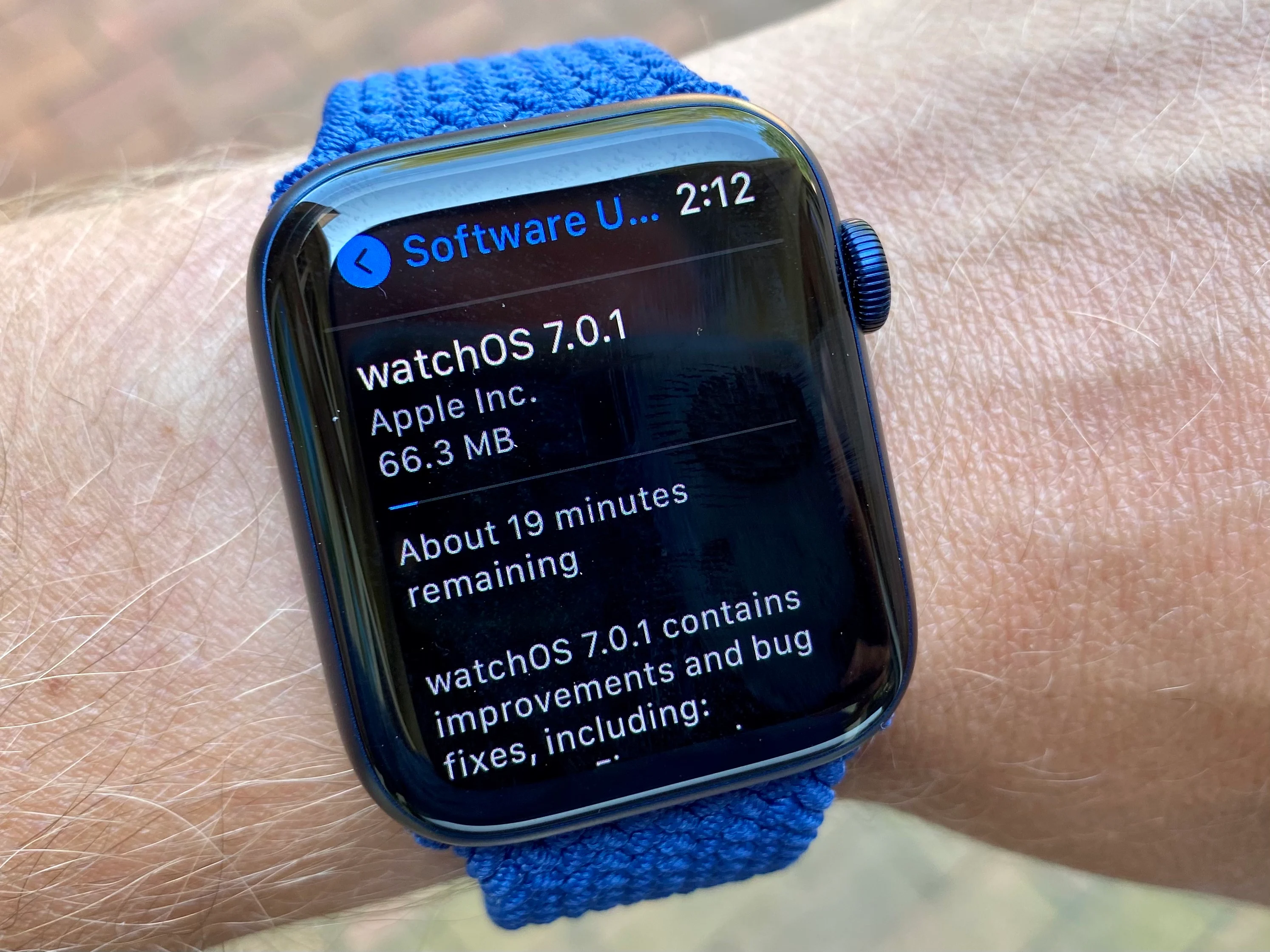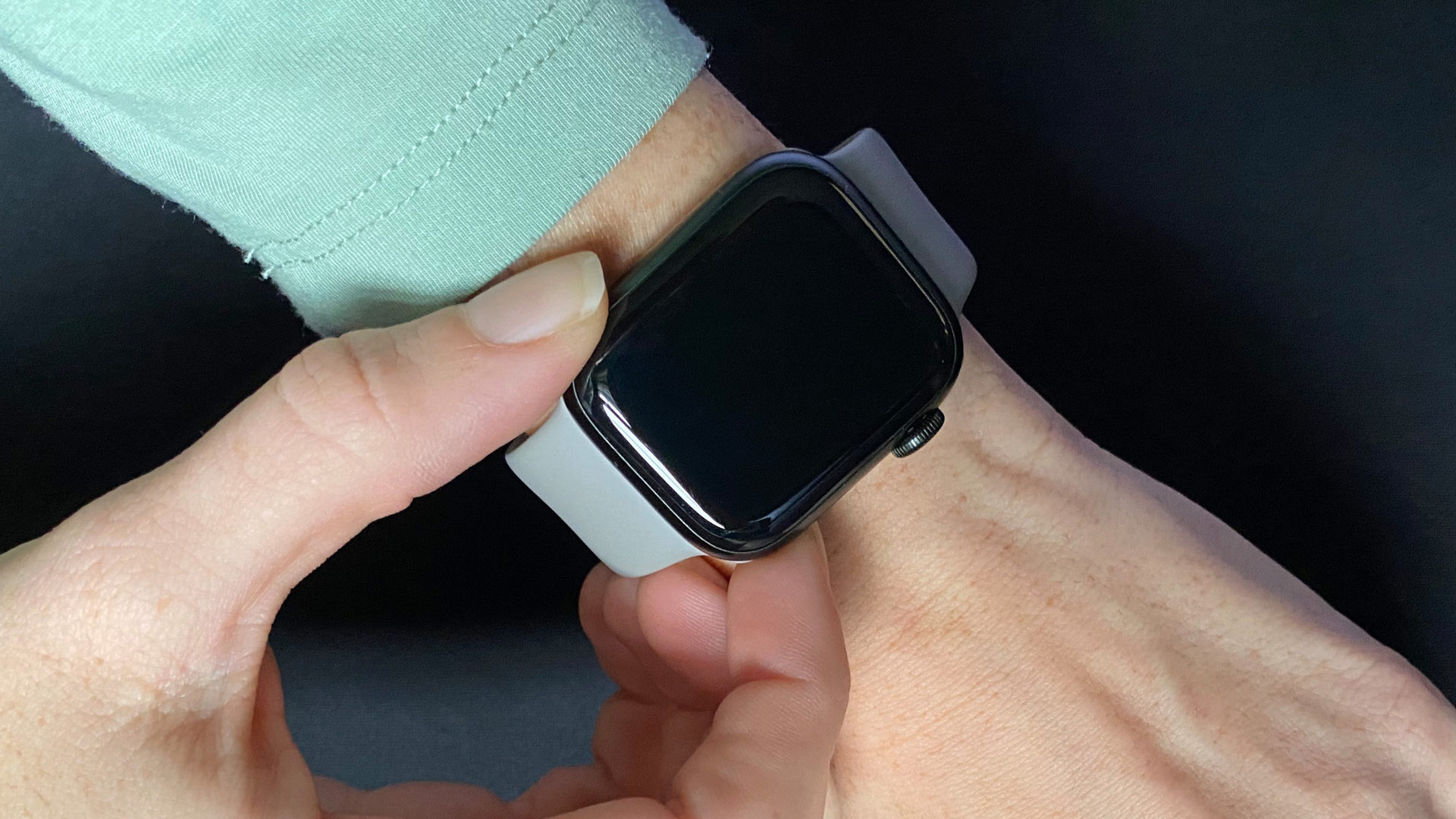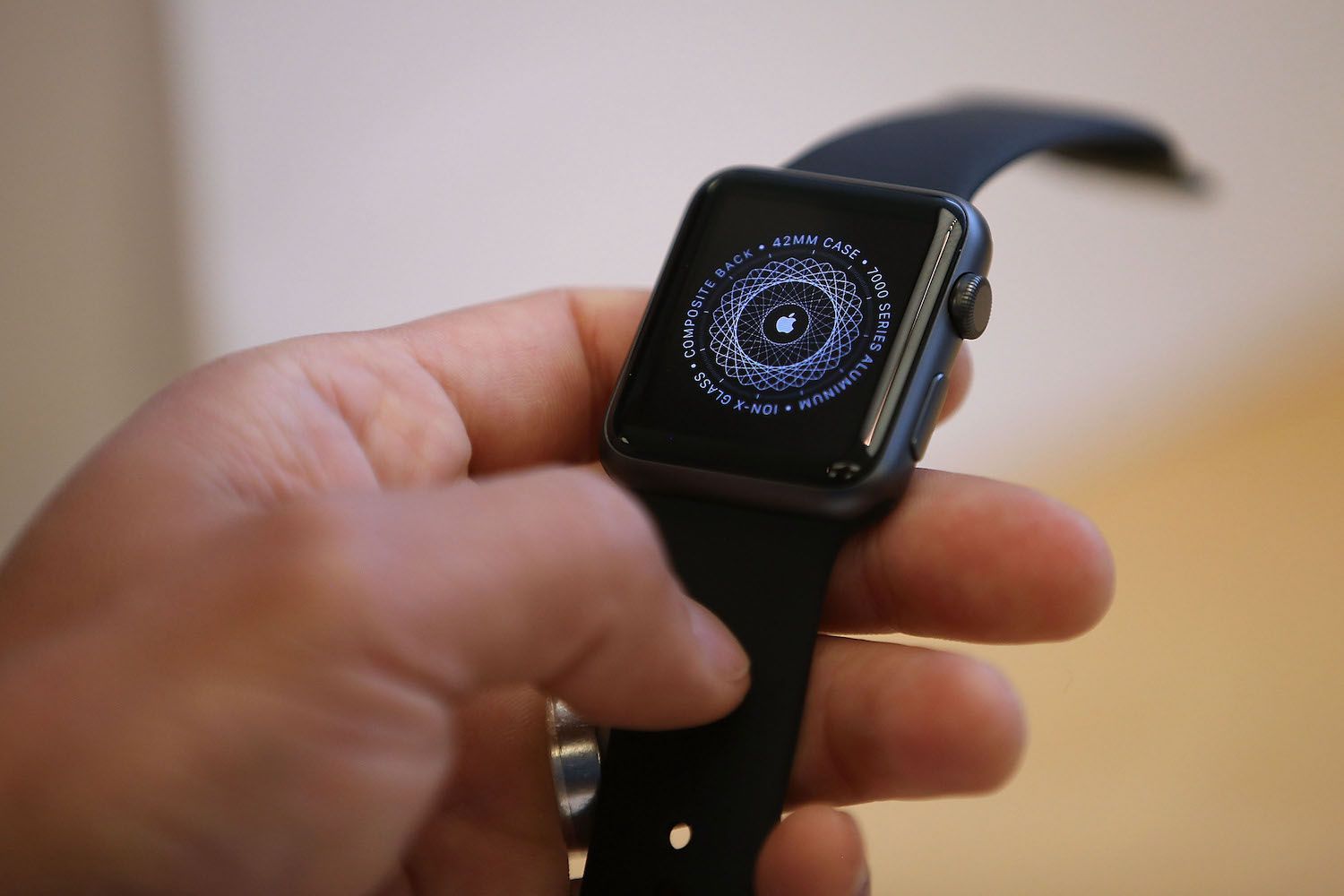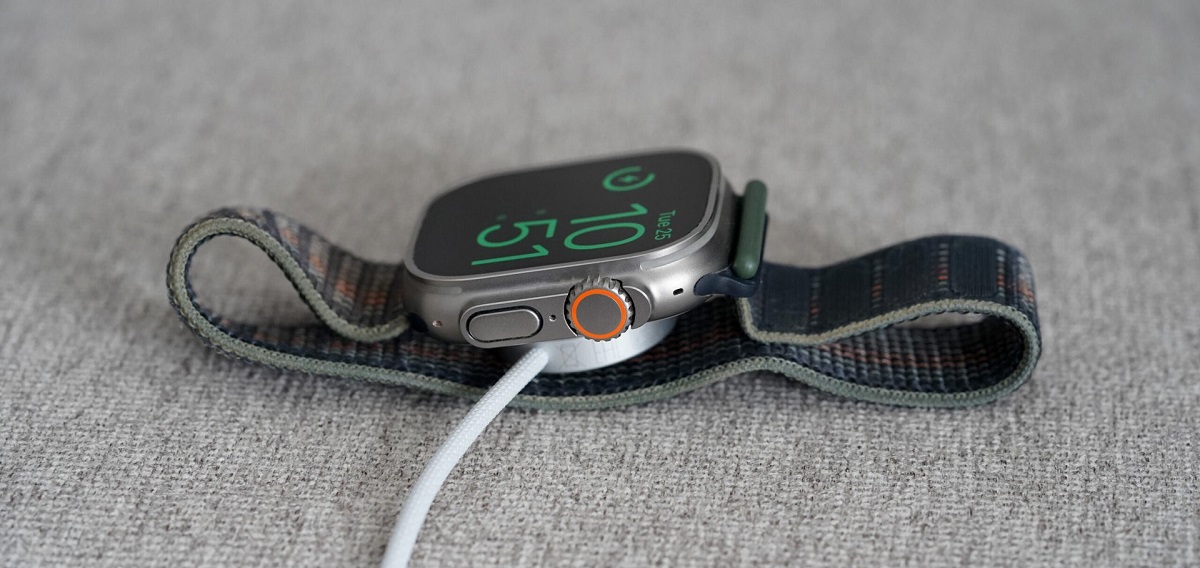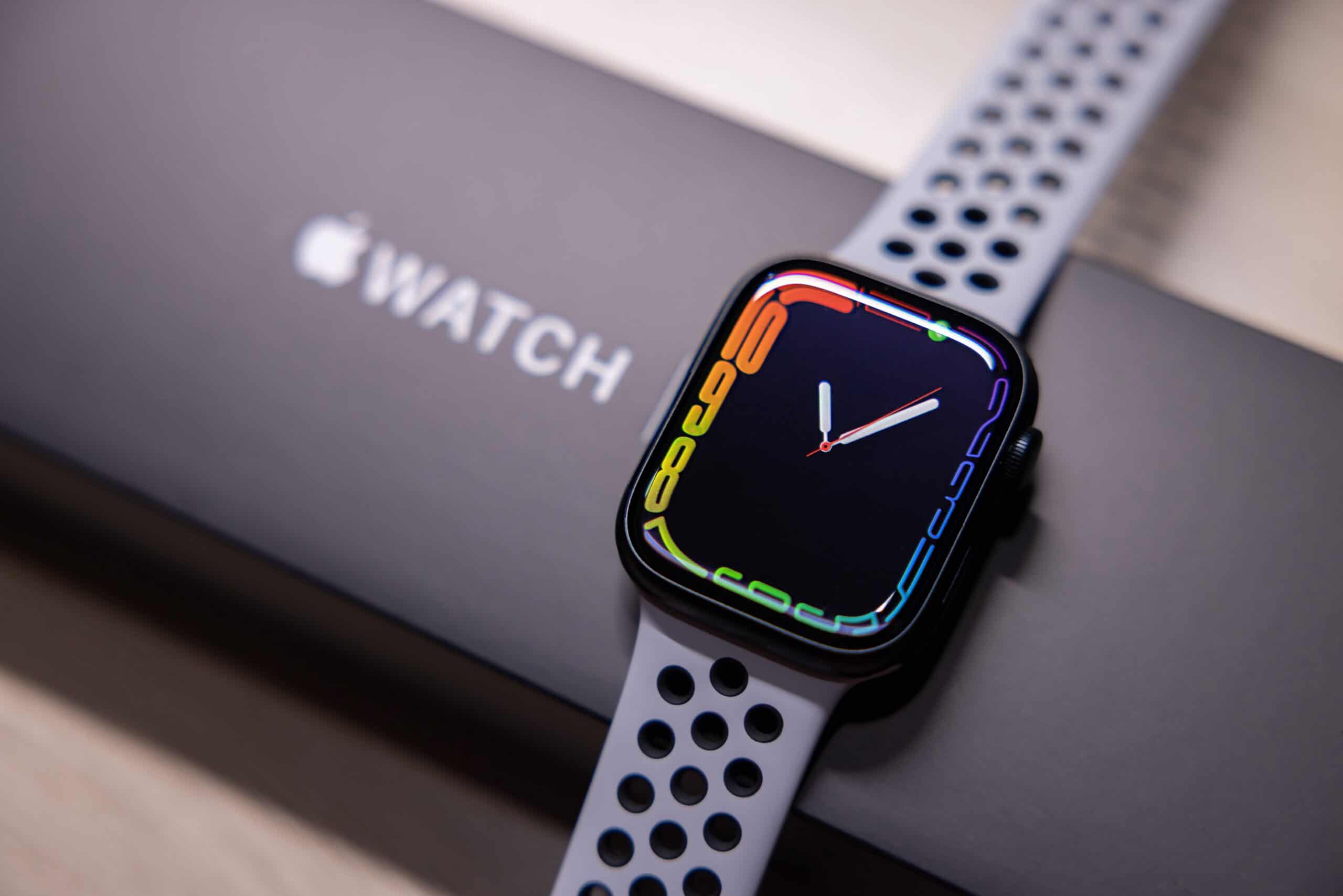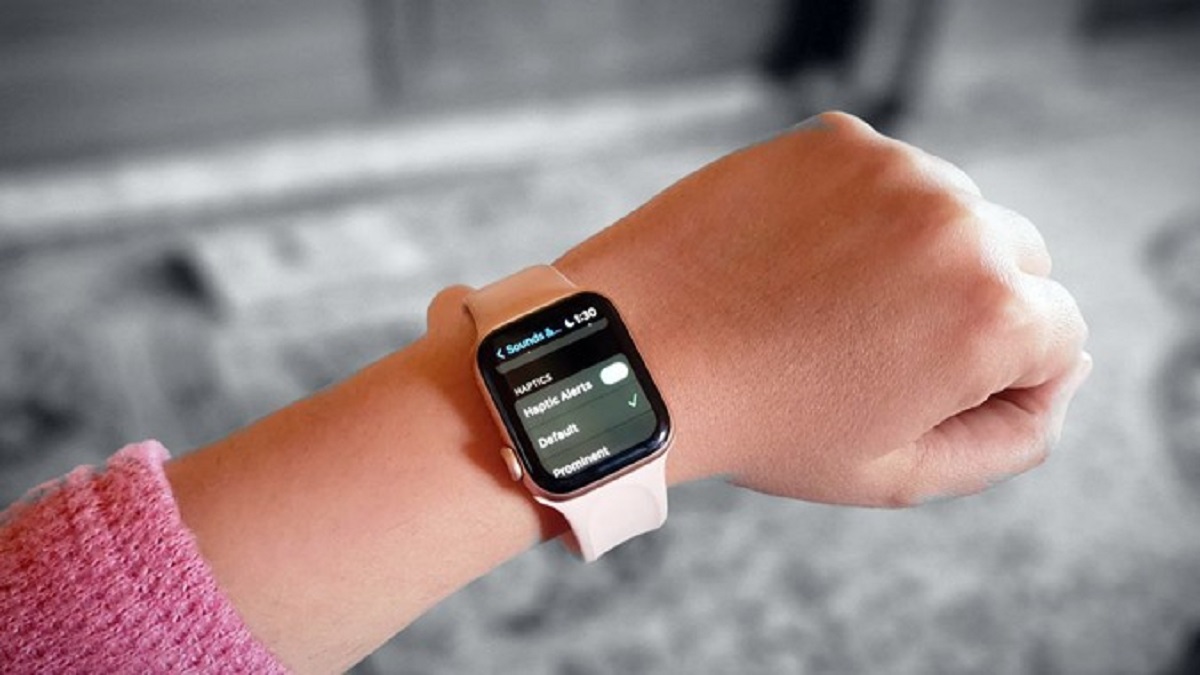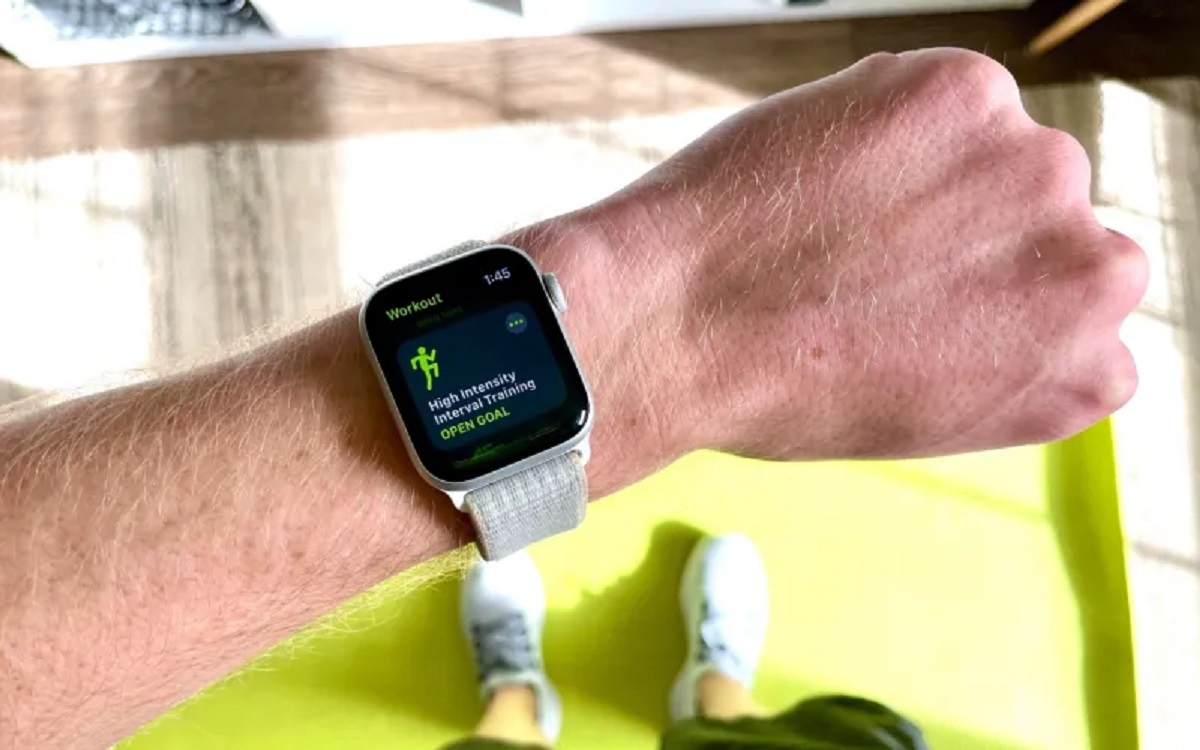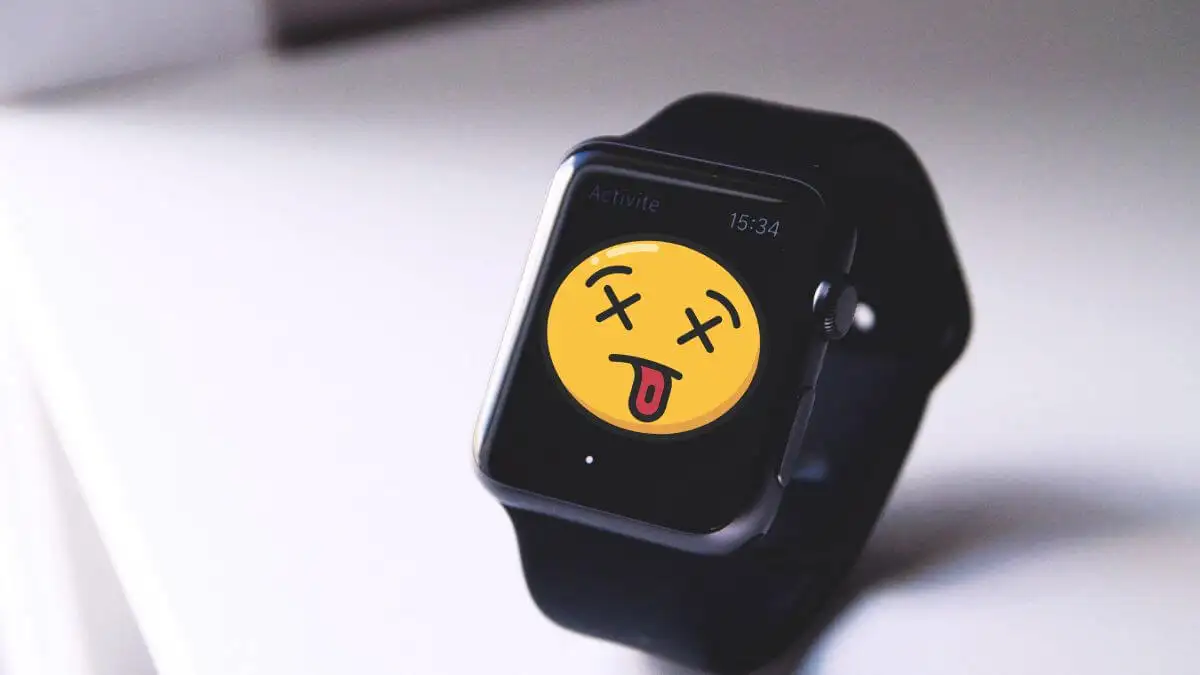Introduction
Apple Watch has become an integral part of our lives, offering a wide array of features and functionalities that help us stay connected, track our fitness goals, and access information with ease. However, one frustration that many Apple Watch users encounter is the time it takes for the device to update.
When a software update notification pops up on your Apple Watch, you might find yourself eagerly anticipating the latest enhancements and bug fixes. But then comes the dreaded realization that the update is taking far longer than expected. So why does an Apple Watch update take so long?
In this article, we will explore the reasons behind the seemingly prolonged update process on Apple Watch. From the software complexity to considerations like limited internal storage and wireless connectivity, we will uncover the factors that contribute to the time it takes for your Apple Watch to update.
Understanding these factors can shed light on why the update process may take longer than you would prefer, helping you manage your expectations and make the most of your Apple Watch experience.
Reasons for Apple Watch Updates Taking Long
There are several factors that contribute to the time it takes for an Apple Watch update to complete. Let’s delve into each of these factors:
- Software Complexity: Apple Watch updates typically include new features, bug fixes, security enhancements, and performance optimizations. These updates require complex coding and rigorous testing to ensure that they work seamlessly with the existing software. The complexity of the software increases with each new update, resulting in longer installation times.
- Size of Updates: As Apple introduces new features and improvements, the size of the updates naturally grows larger. Larger updates require more time to download and install, especially if you have a slower internet connection. Additionally, if you have limited storage space on your Apple Watch, the device might need to offload some data before it can proceed with the update, further extending the installation time.
- Limited Internal Storage: Apple Watch models have limited internal storage compared to other devices like iPhones or iPads. This constraint can impact the installation process, as the device might need to optimize the available space and shuffle data to accommodate the update. This optimization process can slow down the update installation, especially when dealing with large software packages.
- Wireless Connectivity: Apple Watch relies on a Bluetooth connection with your iPhone for most of its functionalities. During an update, the device needs to establish a stable and secure connection with the iPhone to download and install the software. If there are any connectivity issues or interruptions, it can significantly prolong the update process.
- Processing Power: While Apple Watch is equipped with a powerful processor, it is still limited compared to other Apple devices. The device needs to allocate sufficient processing power to handle the update installation while still keeping other essential functions running smoothly. This balancing act can result in longer update times to prevent any performance degradation.
- Security and Validation Processes: Apple is committed to ensuring the security and integrity of its devices. As part of the update process, the software needs to go through rigorous security checks and validation procedures. These processes are important to protect your Apple Watch from potential security vulnerabilities and ensure a seamless user experience. However, they can also contribute to longer update times.
- Battery Life Considerations: Apple Watch is designed to last throughout the day on a single charge. During an update, the device consumes significant amounts of power to download, install, and optimize the software. To prevent the device from running out of battery during the update process, Apple Watch may slow down certain operations, resulting in longer installation times.
By understanding these various factors, you can have a better understanding of why Apple Watch updates may take longer than anticipated. Patience and a stable connection are key during the update process, ensuring a successful and seamless installation of the latest software updates on your Apple Watch.
Software Complexity
Apple Watch updates involve complex software coding and testing processes to introduce new features, fix bugs, enhance security, and optimize performance. The increasing complexity of the software with each update contributes significantly to the time it takes for the update to complete.
Developing and implementing new features requires extensive coding and integration efforts. Apple engineers need to ensure that these features seamlessly integrate with the existing software, maintaining the overall stability and functionality of the device. This complexity translates into a longer installation time during updates.
Moreover, rigorous testing is required to verify the compatibility and reliability of the software before it is released to the public. These tests aim to identify any potential issues or bugs that could negatively impact the user experience. Apple’s commitment to delivering a high-quality product means they invest significant time and resources into thorough testing, which can contribute to longer update times.
Additionally, the intricate nature of the software means that updates often involve changes to multiple components and subsystems of the Apple Watch. The update process needs to ensure that all these components are seamlessly updated and synchronized, without introducing any conflicts or disruptions to the overall functionality of the device.
To ensure a smooth and successful update, it is crucial for Apple to thoroughly test the software’s compatibility with different hardware configurations, third-party apps, and various use cases. The extensive testing and validation procedures take time, but they are vital to maintain the reliability and performance of the Apple Watch.
In summary, the software complexity of Apple Watch updates, with its intricate coding, extensive testing, and integration efforts, contributes significantly to the time it takes for an update to complete. While it may lead to longer installation times, it is necessary to ensure a seamless and reliable user experience with each software update.
Size of Updates
As Apple continues to innovate and add new features to the Apple Watch, the size of the software updates naturally grows larger. The increasing size of updates can contribute to longer installation times on your device.
With each update, Apple introduces new functionalities, bug fixes, security enhancements, and performance optimizations. These updates often include new watch faces, improved health tracking capabilities, enhanced communication features, and more. As the scope of updates expands, so does the size of the software packages required to incorporate these changes.
When you initiate an update on your Apple Watch, the device first needs to download the update file from Apple’s servers. The size of the update file can vary depending on the nature of the update, ranging from a few megabytes to several hundred megabytes or even larger. The download time largely depends on the speed of your internet connection. If you have a slower internet connection, it can significantly prolong the time it takes to download the update.
Once the update file is downloaded, the Apple Watch proceeds to install the update. During this process, the device needs to allocate sufficient memory and resources to store and apply the changes. If your Apple Watch has limited storage space available, it may need to offload some data to make room for the update, which further extends the installation time.
It’s worth noting that the size of updates can also pose challenges for users with older Apple Watch models, which may have lower storage capacities. In such cases, it becomes even more crucial to manage data usage and free up space on the device before initiating an update.
While the increasing size of updates may result in longer installation times, it is a trade-off for the added functionalities and improvements that Apple continuously brings to the Apple Watch. It is recommended to ensure you have a stable internet connection and sufficient storage space available on your device to facilitate a smooth and timely update process.
In summary, the size of Apple Watch updates, which grows with each new release, contributes to longer installation times. The download speed and available storage space on your Apple Watch play significant roles in determining the time it takes for an update to complete. Taking these considerations into account can help manage expectations and ensure a successful update on your Apple Watch.
Limited Internal Storage
One of the factors that can impact the time it takes for an Apple Watch update to complete is the device’s limited internal storage. Compared to other Apple devices like iPhones or iPads, Apple Watch models have significantly less available storage space.
The limited internal storage on Apple Watch means that when you initiate an update, the device needs to optimize the available space and manage data effectively. This optimization process can take time, resulting in longer installation times for updates.
During the update installation, the Apple Watch checks the available storage space and may need to offload some data to create room for the new software. This offloading process involves temporarily removing certain files or apps from the device and then restoring them after the update is complete.
If your Apple Watch is already running low on storage space, the device may need to offload a significant amount of data before it can proceed with the update. This can lead to longer installation times as the device carefully manages the available storage and optimizes the content to fit the update requirements.
It’s important to note that managing storage space on your Apple Watch can help mitigate the impact of limited internal storage on update times. Removing unused apps, deleting unnecessary files, and syncing data with your iPhone or iCloud can free up space on the device, allowing updates to install more efficiently.
Additionally, choosing to update your Apple Watch when it has sufficient battery charge can further optimize the installation process. Ensuring that your Apple Watch is fully charged or connected to a power source can help minimize interruptions during the update and prevent any unexpected issues due to low battery levels.
In summary, the limited internal storage of Apple Watch models can contribute to longer update installation times. Managing storage space on your device and ensuring sufficient battery charge can help mitigate these impacts and facilitate a smoother and more efficient update process.
Wireless Connectivity
The wireless connectivity between your Apple Watch and iPhone plays a crucial role in the update process. The stability and strength of the Bluetooth connection can significantly impact the time it takes for an Apple Watch update to complete.
During an update, the Apple Watch relies on a Bluetooth connection with your iPhone to download the update file and install the software. This connection is essential for transmitting data between the two devices and ensuring a successful update.
If the Bluetooth connection between your Apple Watch and iPhone is weak or unstable, it can lead to interruptions or delays in the update process. These interruptions might result in failed download attempts or incomplete installation, requiring you to start the update process again.
Factors such as distance, obstructions, and interference from other devices can weaken the Bluetooth connection between your Apple Watch and iPhone. It is advisable to keep the devices within a reasonable range and remove any obstructions that might hinder the connection during an update.
Furthermore, the overall speed and quality of your internet connection on the iPhone also impact the update process. A slow internet connection can significantly prolong the time it takes for the update file to download onto your Apple Watch.
To ensure optimal wireless connectivity during an update, consider the following tips:
- Keep your Apple Watch and iPhone in close proximity to maintain a strong Bluetooth connection.
- Ensure your internet connection on the iPhone is stable and fast.
- Minimize interference from other electronic devices that might disrupt the Bluetooth connection.
- Restart both your Apple Watch and iPhone if you encounter any connectivity issues during the update process.
Taking these precautions can help ensure a smooth and uninterrupted update process by maintaining a strong and stable wireless connection between your Apple Watch and iPhone.
In summary, the wireless connectivity between your Apple Watch and iPhone plays a crucial role in the update process. A strong and stable Bluetooth connection, along with a reliable internet connection on the iPhone, is essential for a smooth and timely update installation.
Processing Power
While the Apple Watch is equipped with a powerful processor, it still has limitations compared to other Apple devices. The device needs to allocate sufficient processing power to handle the update installation while keeping other essential functions running smoothly. This balancing act can result in longer update times on the Apple Watch.
During an update, the processor of the Apple Watch is responsible for several tasks. It needs to download the update file, unpack and verify the software package, optimize memory allocation, and install the updates without affecting the performance of other running processes.
The allocation of processing power during an update is managed to prioritize the stability and efficiency of the device. While the update is taking place, certain tasks may be slowed down or temporarily paused to ensure that the update installation process is completed successfully.
Moreover, if you have multiple apps running or notifications constantly coming in while the update is in progress, the Apple Watch needs to juggle these tasks along with the installation process. This multitasking can lead to longer installation times as the device tries to balance and allocate resources effectively.
Additionally, the overall performance of the Apple Watch may impact the time it takes for updates to complete. If the device is already experiencing lag or slowdowns due to other factors, such as an outdated operating system or a large number of apps, it may take additional time to install the update.
It’s important to note that the processing power and performance of Apple Watch models have improved significantly over the years. This means that newer models may generally experience faster update installation times compared to older models.
To ensure a smoother update installation process, you can take the following steps:
- Ensure that your Apple Watch is charged adequately, as a low battery level can impact the update process and slow down the installation.
- Close unnecessary apps and reduce the number of active tasks on the Apple Watch to minimize the processing power required during the update.
- Consider updating your Apple Watch when it is not actively being used or when you do not require immediate access to its functionalities.
By managing these factors and optimizing the processing power of your Apple Watch during updates, you can help facilitate a smoother and more efficient installation process.
In summary, the processing power of the Apple Watch, along with managing concurrent tasks and optimizing resources, can impact the time it takes for updates to complete. Balancing the allocation of processing power ensures a stable and efficient update installation process.
Security and Validation Processes
Ensuring the security and integrity of the Apple Watch is a top priority for Apple. As part of the update process, the software goes through rigorous security checks and validation procedures. These processes contribute to the time it takes for an Apple Watch update to complete.
When Apple releases an update for the Apple Watch, they conduct extensive testing to identify and address any potential security vulnerabilities. This testing involves analyzing and evaluating the software for any potential threats or weaknesses that could compromise the device’s security.
Furthermore, Apple imposes strict validation processes to ensure that the software update is stable and compatible with the Apple Watch. These validation procedures involve thoroughly testing the update across various hardware configurations and compatibility scenarios.
During the validation process, Apple checks for issues such as compatibility with existing apps, potential conflicts with system components, and any usability concerns that may arise from the update. These validations help ensure that the update provides a seamless and reliable user experience.
While the security and validation processes add time to the update installation, they are crucial for maintaining the integrity and trustworthiness of the Apple Watch. By conducting thorough security checks and validations, Apple can safeguard user data and protect against potential vulnerabilities.
Additionally, Apple follows a phased release approach for software updates. This means that the update is not pushed to all users simultaneously, but rather it is released in stages. This approach allows Apple to closely monitor the update’s performance and address any unforeseen issues that may arise before a broader release.
By going through rigorous security and validation procedures, Apple ensures that the Apple Watch update you receive is thoroughly tested, secure, and compatible with your device. While these processes may lead to longer installation times, they ultimately contribute to the overall reliability and performance of your Apple Watch.
In summary, the security and validation processes carried out by Apple are essential for ensuring the safety and stability of the Apple Watch. These procedures contribute to the time it takes for an update to complete but are necessary to maintain the integrity and reliability of the device’s software.
Battery Life Considerations
Battery life is a critical aspect to consider during an Apple Watch update. The update process can consume a significant amount of power, impacting the time it takes for the update to complete.
During an update, the Apple Watch uses substantial battery power to perform tasks such as downloading the update file, unpacking and installing the software, and optimizing system resources. To ensure a successful update installation, it is important for your Apple Watch to have sufficient battery charge.
If your Apple Watch has a low battery level during an update, the device may prioritize power conservation to prevent it from shutting down during the installation process. This power management strategy can slow down certain operations and result in longer update times.
Apple recommends ensuring that your Apple Watch is at least 50% charged before initiating an update. This helps provide ample power to complete the update installation without draining the battery excessively.
It’s important to note that the length of time it takes to update your Apple Watch can vary based on the battery percentage at the beginning of the update. The device may adjust the update process to conserve power and extend battery life, ultimately affecting the overall installation time.
To optimize the update installation process and ensure a seamless experience, consider the following battery life considerations:
- Charge your Apple Watch to at least 50% before initiating an update.
- If possible, connect your Apple Watch to a power source during the update process to avoid any battery-related interruptions.
- Limit the usage of power-draining features, such as extensive app usage or excessive notifications, during the update.
By taking these battery life considerations into account, you can help facilitate a smooth and efficient update installation process on your Apple Watch.
In summary, the battery life of your Apple Watch is an important factor to consider during an update. Ensuring sufficient battery charge before initiating the update helps avoid potential interruptions and power management strategies that can extend the overall installation time.
Conclusion
Updating your Apple Watch can be an exciting process as it brings new features, bug fixes, and security enhancements to your device. However, it’s important to understand that the time it takes for an Apple Watch update to complete can vary depending on several factors.
We have explored various reasons why Apple Watch updates may take longer than expected. The software complexity, size of updates, limited internal storage, wireless connectivity, processing power, security and validation processes, and battery life considerations all play a role in the duration of the update process.
Despite the potential for longer installation times, it’s crucial to remember that these factors contribute to delivering a stable, secure, and optimized user experience on your Apple Watch. Apple invests significant time and resources to ensure that updates are thoroughly tested, compatible, and reliable before release.
To optimize the update process and facilitate a smoother installation, consider preparing your Apple Watch by freeing up storage space, ensuring a stable wireless connection, and keeping the device charged adequately. These steps can help minimize potential interruptions and delays during the update.
Ultimately, having patience and managing expectations is key when updating your Apple Watch. While waiting for the update to complete, you can take the opportunity to explore other features of your device or engage in other activities that don’t require its immediate use.
By understanding the factors that contribute to the length of an Apple Watch update, you can approach the process with a better understanding and appreciation for the improvements it will bring to your device.
So, the next time you see an update notification on your Apple Watch, you can rest assured that the wait will be worth it as it brings new enhancements and optimizations to improve your overall experience with this remarkable wearable device.







